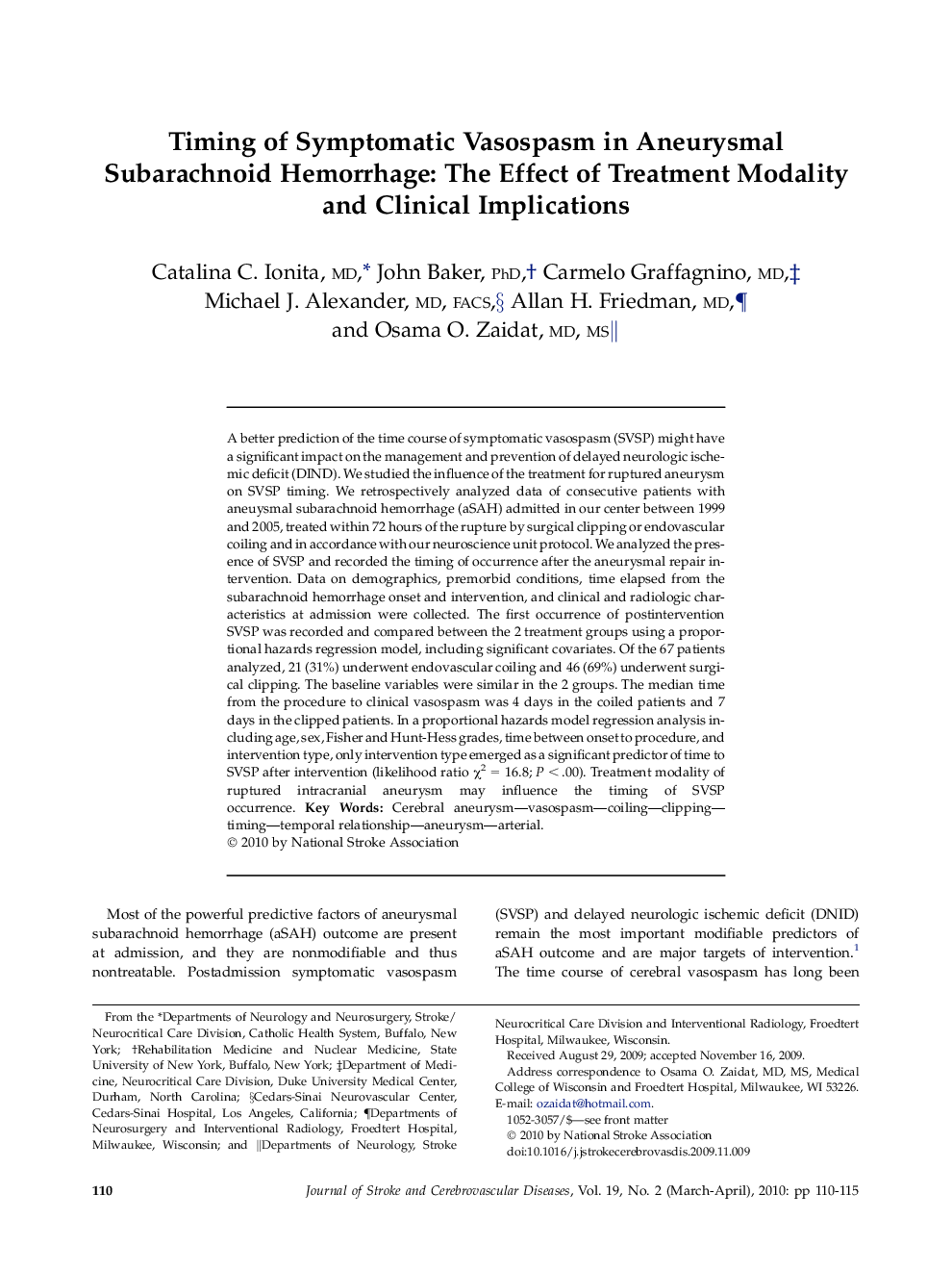| Article ID | Journal | Published Year | Pages | File Type |
|---|---|---|---|---|
| 2711577 | Journal of Stroke and Cerebrovascular Diseases | 2010 | 6 Pages |
A better prediction of the time course of symptomatic vasospasm (SVSP) might have a significant impact on the management and prevention of delayed neurologic ischemic deficit (DIND). We studied the influence of the treatment for ruptured aneurysm on SVSP timing. We retrospectively analyzed data of consecutive patients with aneuysmal subarachnoid hemorrhage (aSAH) admitted in our center between 1999 and 2005, treated within 72 hours of the rupture by surgical clipping or endovascular coiling and in accordance with our neuroscience unit protocol. We analyzed the presence of SVSP and recorded the timing of occurrence after the aneurysmal repair intervention. Data on demographics, premorbid conditions, time elapsed from the subarachnoid hemorrhage onset and intervention, and clinical and radiologic characteristics at admission were collected. The first occurrence of postintervention SVSP was recorded and compared between the 2 treatment groups using a proportional hazards regression model, including significant covariates. Of the 67 patients analyzed, 21 (31%) underwent endovascular coiling and 46 (69%) underwent surgical clipping. The baseline variables were similar in the 2 groups. The median time from the procedure to clinical vasospasm was 4 days in the coiled patients and 7 days in the clipped patients. In a proportional hazards model regression analysis including age, sex, Fisher and Hunt-Hess grades, time between onset to procedure, and intervention type, only intervention type emerged as a significant predictor of time to SVSP after intervention (likelihood ratio χ2 = 16.8; P < .00). Treatment modality of ruptured intracranial aneurysm may influence the timing of SVSP occurrence.
